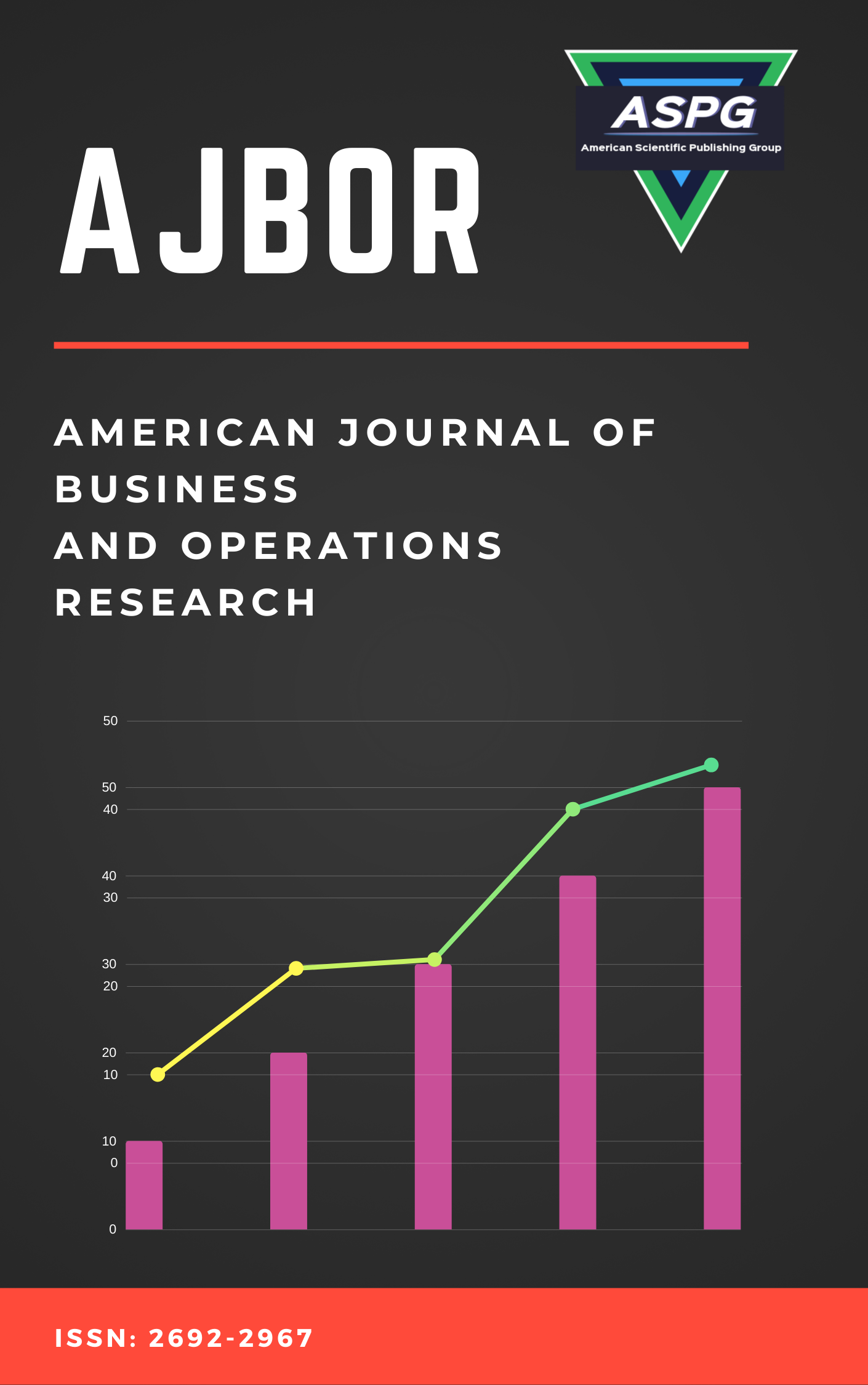

Volume 1 , Issue 1 , PP: 52-59, 2020 | Cite this article as | XML | Html | PDF | Full Length Article
Corinne Celant 1 * , Irina V. Pustokhina 2
Doi: https://doi.org/10.54216/AJBOR.010105
The stagnation of the domestic market has brought the majority of the small and medium-sized enterprises (SME) to their knees, leading them to reinvent their way of doing business and find new strategies in order to survive and grow when the environmental conditions are deeply changing. On the one hand, new trends create a strong disruption on a structural level among the productive fabrics, but on the other hand, they represent also an opportunity, which opens new scenarios and new possibilities for the relaunch of SMEs.
Among the most important challenges for Italian SMEs is internationalization, which is the possibility for enterprises to trade their goods not only on the domestic market but also on the foreign markets trying to find new opportunities to obtain some advantages. This is a very complicated process, traumatic and challenging in term of resources, but the possibility to have a genetic patrimony and a productive value, as the ones of the “Made in Italy", gives to the products of Italian enterprises a high level of competition and strong differentiation, making this process more accessible.
The growth and competitiveness of enterprises, in particular SMEs, increasingly depend on the ability to apply new knowledge, working methods, and technologies as well as on the opportunity to participate in the commercialization of research developments in order to create new products, services or processes. Therefore, companies should strive to benefit from the opportunities and competitive advantages that innovation brings. SMEs play an important role in economic growth and provide most of the new jobs in Italy.
Within the framework of this paper, the insight into the SMEs internationalization process is presented. The article provides an analysis of SMEs in the process of internationalization. Besides it concentrates on the new threats and opportunities represented by the new industrial revolution - Industry 4.0. Analyzing the impact of Industry 4.0 on the internationalization of Italian SMEs, the authors explain the solutions that are being used and the ones that should be taken.
SME, Industry 4.0, digitalization, investment, reshoring, manufacturing, customization, innovation
[1] Kubíčková L., Votoupalová M., Toulová M. (2014) Key Motives for Internationalization Process of Small and Medium-Sized Enterprises. Procedia Economics and Finance, 319-328.
[2] Gubitta, P. (2013) Leprichevincono la crisi – Storie di aziende (quasi medie) vincentineimercatiglobali. (1 ed.) Venezia: MarsilioEditore.
[3] Barozzini L. (2017) La quartarivoluzioneindustriale inside Industria4puntozero, Warrantraining. Available at: http://www.industria4puntozero.it/wp-content/uploads/2017/03/E-book_Marzo_New_Version.pdf).
[4] McKinsey Digital. Industry 4.0 after the initial hype (2016). Available at: https://www.mckinsey.com/~/media/mckinsey/business%20functions/mckinsey%20digital/our%20insights/getting%20the%20most%20out%20of%20industry%204%200/mckinsey_industry_40_2016.ashx.
[5] D. Trotta and P. Garengo (2018) Industry 4.0 key research topics: A bibliometric review.7th International Conference on Industrial Technology and Management (ICITM), Oxford, 113-117. University of Padua.
[6] Moeuf A, Pellerin R, Lamouri S, Tamayo-Giraldo S, Barbaray R (2018) The industrial management of SMEs in the era of Industry 4.0. International Journal of Production Research, 56 (3), 1118-1136.
[7] De Vico (2016), #SindacatoFuturo in Industry 4.0, s.d. , Modena, ADAPT University.
[8] Calenda Carlo (2016), Industria 4.0 presso la Camera deiDeputati, MinisterodelloSviluppoEconomico, 15 giugno 2016, Roma.
[9] Bettiol Marco (2015), Raccontareil made in Italy. Unnuovolegametracultura e manifattura, 23 gennaio 2015, Venezia, Marsilio.
[10] Fortis M., Corradini S., Carminati M. (2015), Italy’s Top Products in World Trade. The Fortis-Corradini Index, 6 marzo 2015, Londra, Spinger Briefs.
[11] Uni-CLUB MoRe Back-Reshoring (2016), Back-reshoring e Near Reshoring: motiviedevidenze. 8giugno 2016.
[12] MinisteroAffariEsteri (2015), DiplomaziaEconomicaItaliana, Parolad’ordine: reshoring. Rilocalizzareora è un must, 8 settembre 2015, Roma; A.Ricciardi-P.Pastore-A.RussoS.Tommaso, Strategie di back-reshoring in Italia: vantaggicompetitivi per le aziende, opportunità di sviluppo per ilpaese, 2015.
[13] Fondazione Nord Est and Prometeia (2015) Make in Italy. Il 1° rapportosull’impattodelletecnologiedigitalinelsistemamanifatturieroitaliano. Roma: Fondazione Make in Italy CDB, ItaliaLavoro, Hewlett Packard, BNL GruppoBnp Paribas. Available at: http://www.makeinitaly.foundation/wpcontent/uploads/2015/10/make_in_italy_rapporto_completo_impatto_tecnologie_digitali_nel_sistema_manifatturiero_italiano.pdf.
[14] Potential business impact of cybercrime on small and medium enterprises (SMEs) in 2016 Survey report Switzerland.
[15] Bayraktar O., Ataç C. (2018) The Effects of Industry 4.0 on Human Resources Management. Globalization, Institutions and Socio-Economic Performance. Publisher: Peter Lang GmbH, 337-360.
[16] FB & Associati (2016), Indagine conoscitiva Industria 4.0, 6 luglio 2016, Roma, s.n.
[17] LEGGE DI BILANCIO (BUDGET LAW) (2016). Available at: https://www.senato.it/service/PDF/PDFServer/BGT/00993525.pdf.
[18] Maseleno A, Tang AYC, Mahmoud MA, Othman M, Shankar K (2018) Big Data and E-Learning in Education 4.0. International Journal of Computer Science and Network Security, 18 (5), 171-174.
[19] INTESA PMI italiane e industria 4.0: unpercorsoancora in salita (2019). Available at: https://www.intesa.it/pmi-italiane-e-industria-4-0-un-percorso-ancora-in-salita/
[20] Jose Albors-Garrigos& Juan Ignacio Igartua& Angel Peiro (2018) Innovation Management Techniques And Tools: Its Impact On Firm Innovation Performance. International Journal of Innovation Management (IJIM), World Scientific Publishing Co. Pte. Ltd., 22(06), 1-31.